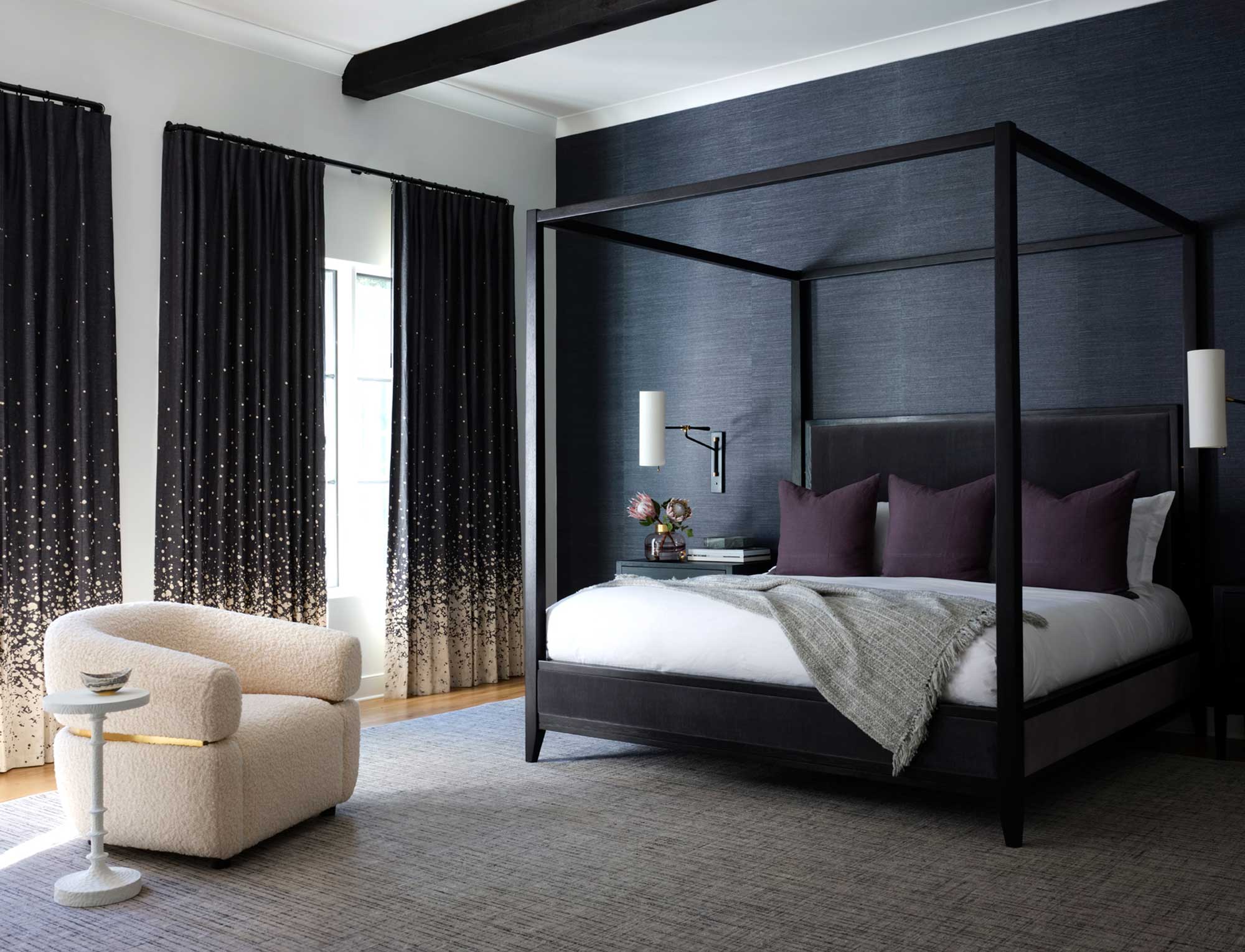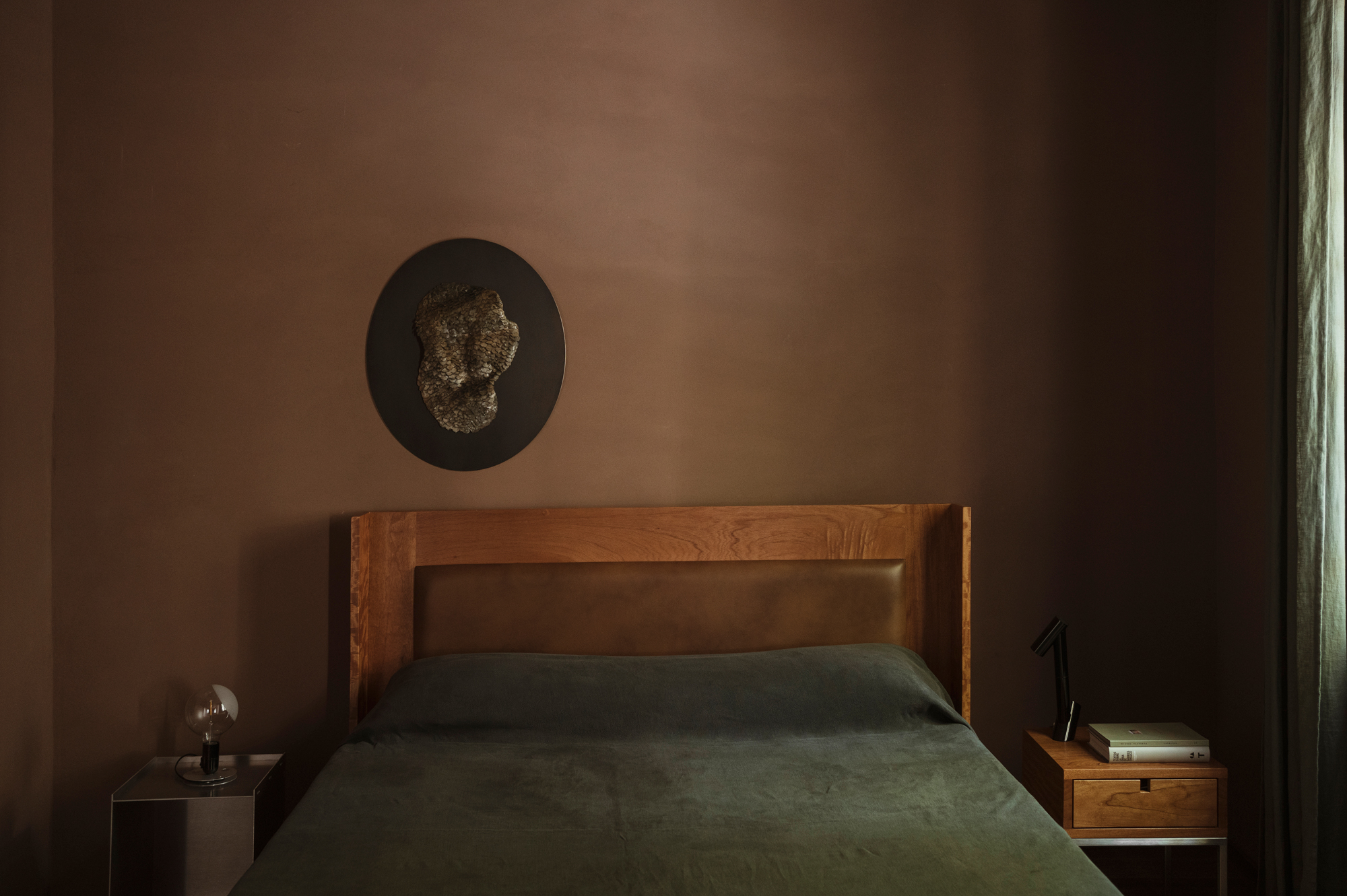Should a bedroom be light or dark? We turned to sleep, color and interiors experts for the answer
Does the color of your bedroom affect how you sleep? We ask the experts whether to stay bright and light in our sleep spaces, or lean into the darkness


Bedrooms are primarily for sleeping, so the perfect bedroom should provide optimum conditions to do just that. It should be a relaxing environment to unwind and escape the stress, noise, distractions, and often fast pace of modern life - that we can all agree on.
Color psychology demonstrates the influence color has on our mood, physiology, and behavior, so a soothing bedroom color scheme plays a vital role in creating a serene space. But is a light or dark bedroom more conducive to creating that rest-inducing sanctuary and achieving the high quality of sleep we so badly crave?

Sophie is a home interiors writer and all-around design aficionado, currently studying interior design at London's KLC. For this article, she spokes to design, color and sleep experts to get to the bottom of whether bedrooms should be painted dark or light.
Why is light important in a bedroom anyway?
Before diving into the debate of whether a bedroom should be light or dark, I spoke to Stephanie Romiszewski, CMO of the Sleepyhead program and Sleep Physiologist at the Sleepyhead Clinic, to understand a bit more about our sleeping habits. ‘The light-dark cycle that we have on this planet is highly influential on us because we evolved on this planet, and we are diurnal creatures,’ says Stephanie. ‘That means we are more effective and efficient in the daytime than the nighttime.’
Our circadian rhythm is like an internal clock responding to daytime-nighttime cues like light and darkness. Our bodies are designed to feel energized and awake by sunrise and relaxed and sleepy by sunset. ‘Circadian rhythms are psycho-physiological cycles that run over the 24-hour period,’ explains Stephanie. ‘If we’re not getting enough light during the day… that impacts our fatigue levels, mood levels, and appetite regulation,’ it’s all connected.
The natural hormone melatonin also plays a crucial role in the sleep-wake cycle. The brain produces it in response to darkness, making us feel sleepy. ‘Light reduces fatigue levels as it reduces how much melatonin you receive.’ So, what does this mean in the context of modern bedroom decor? How much bearing does a light or dark bedroom have, if any, on our sleep quality?

Understanding the influence of color brightness
‘Color definitely affects our biorhythms,’ says Patrick O’Donnell, color consultant and international brand ambassador for Farrow & Ball. ‘The one color we usually advise against in a bedroom is bright yellow because it’s so energizing, which is not what you want in a bedroom.’ Bright, saturated hues are best left for high-energy parts of the home, such as the kitchen. Instead, Patrick recommends using light to mid-green shades or gentle muted pinks with a nuanced brown undertone to create a calm and relaxing bedroom environment. But what about the brightness value?
‘If you are blessed with abundant natural light, especially south-facing, then bright, cheery light colors will come into their own,’ says Patrick. ‘They make the space feel fresh and breezy and benefit from an all-over simple decorative aesthetic… perfect for those that like their spaces clean and organized,’ he adds. While bright and breezy sounds like an excellent way to start the day, it may not be conducive to winding down and settling into a deep slumber. That said, as interior designer Kate Lester rightly points out, there are ways to make your bedroom darker for better sleep - ‘even bright bedrooms can become dark at night thanks to blackout window treatments, so you can have the best of both worlds!’
The Livingetc newsletters are your inside source for what’s shaping interiors now - and what’s next. Discover trend forecasts, smart style ideas, and curated shopping inspiration that brings design to life. Subscribe today and stay ahead of the curve.
On the other hand, dark colors can create an inviting cocooning effect. ‘They will envelop you, and surprisingly, they are a great option for poorly lit rooms as they work with the natural limitations rather than fighting them,’ explains Patrick. ‘I adore dark or semi-dark bedrooms. The idea of entering a bedroom that ‘wraps’ you in its arms is just the ticket for a little nighttime reading and, eventually, a restful night's sleep,’ he says. A dark and moody bedroom may help your body settle into a deep slumber.

It all comes down to personal preference
If there’s one thing all our experts can agree on, it’s that, ultimately, it all comes down to personal preference and how a color or shade makes you feel. ‘Some want a bedroom to be fresh and bright, and others want more of a cozy bedroom sanctuary where they can relax and escape,’ says Kate. Interior designer Emily Del Bello agrees: ‘I like a fresh, light, and airy space so I can have a fresh night’s sleep. However, I’ve had several clients that find more peace in moody, dark bedrooms.’
‘There is not a right or wrong answer to this debate,’ confirms interior designer Jen Talbot. ‘Moody or bright and airy are personal preferences and are often dictated by the space itself,’ she says. ‘If the room has smaller windows and less light, it can be interesting to push the low light factor and lean into the already innately moody vibe, achieving the dark design direction effortlessly.’
‘If you don’t resonate with the color of your room and it doesn’t make you feel comfortable, peaceful, and relaxed, then that's going to increase your stress and anxiety levels,’ agrees Stephanie. However, if you have a chronic sleep problem, she recommends paying more attention to your behavior and habits, including exposure to artificial light and electronic devices at night.
‘All light can make us alert and reduce our sleepiness, amongst many other things.’ Investing in suitable modern window treatments and layered lighting is the best way to guarantee good sleep quality. That way, you can enjoy a bright bedroom during the day and curate a low-lit sleep-inducing environment at night.

Bedrooms aren’t just for sleeping
‘The color palette you select should pair with how you plan to use the space and the feeling you want it to evoke when you step inside,’ says Kate. ‘Someone who is a morning person or doesn’t sleep a lot may want a brighter space so it can play double duty as a study. Someone who covets their sleep time and loves to lounge may want a more comfortable and cozy space - often, that means a dark bedroom with deeper hues and more luxurious or heavier textiles.’
Jen Talbot takes a similar approach with her clients, ‘when deciding which direction to take the space, we listen to the client's habits and lifestyle,’ she says. ‘Client's that are light sleepers and prefer blackout drapes do better in a moody, darker room. The darker design direction does tend to lend better to deeper, more restful sleep. Our brains register darkness with sleep and hibernation.’
The final verdict
Jen said it first, and I can confirm there is no right or wrong answer to this debate. Whether a bedroom should be light or dark depends on personal preference, the room itself, and how you intend to use the space during the day. Color influences the feel of the room, so go ahead and choose a soothing shade - whatever that means to you. And whether you choose a dark, cocooning scheme, a bright and airy one, or something in between, a good quality blackout window treatment is a must to create a melatonin-inducing darkness that guarantees a deep slumber.

Sophie is a home interiors writer and all-around design aficionado. With a degree in History of Art and Spanish, she has a keen interest in the influence of art, history, and culture in design. Having lived in Buenos Aires for five years, Sophie is an experienced communicator in both English and Spanish with a professional background in public relations and marketing. Sophie is also an interior design student at KLC, paving the way to tell stories through interiors that inspire, serve and create experiences worth remembering. Sophie currently writes for Livingetc, Better Homes & Gardens, and Foter Magazine.